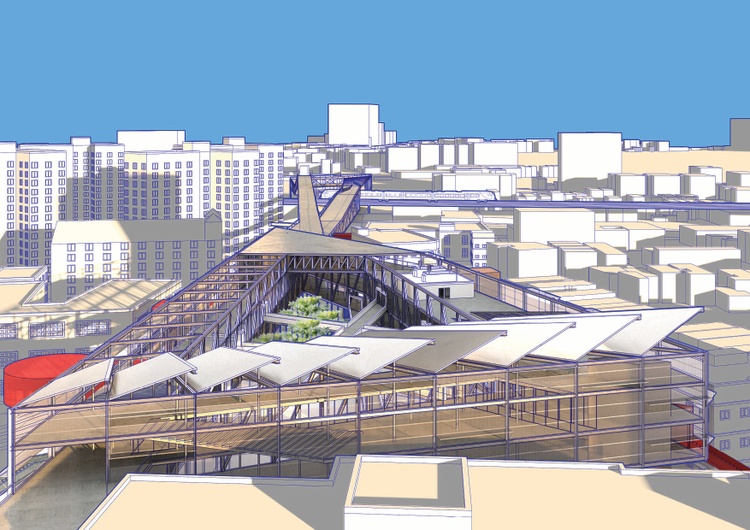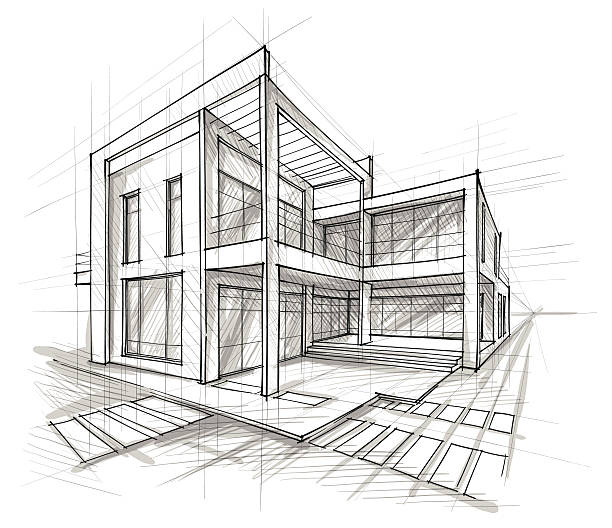Changing Rooms: The Vision of CDA Architects for Modern Living
Comprehending the Collaborative Refine In Between Engineers and Designers in Modern Building Projects
The collective procedure between designers and designers is important in contemporary construction jobs, as it harmonizes style intent with design expediency. Discovering these dynamics exposes understandings that could dramatically impact job outcomes and general sector standards.
The Value of Cooperation
The collaborative harmony in between architects and engineers is crucial for the effective realization of any type of building and construction project. This partnership brings with each other distinct know-how and perspectives, enabling the combination of ingenious design with practical design solutions. By interacting, designers and engineers can make certain that a project not only satisfies visual and useful needs but also complies with safety and security, sustainability, and monetary constraints.
Collaboration promotes a common vision, assisting in the placement of objectives and assumptions from the outset. This placement is vital in resolving possible obstacles and mitigating risks that might develop during the project lifecycle. In addition, a collective technique permits the effective appropriation of sources, maximizing both time and expense.
The importance of cooperation encompasses the repetitive procedure of design and building, where comments from engineers can educate architectural choices, bring about more practical and lasting styles. Conversely, designers can motivate designers to think artistically about just how to attain architectural integrity without endangering creative intent. Inevitably, the collective connection between designers and designers is not just helpful; it is essential to the production of top notch, practical, and innovative developed atmospheres that fulfill the requirements of society.
Interaction Techniques and Devices
Reliable interaction techniques and tools are vital for cultivating partnership in between architects and engineers throughout the project lifecycle. Developing clear channels of interaction is vital to guarantee that all employee are lined up with job purposes, timelines, and duties. Routine meetings, both in-person and digital, offer chances for stakeholders to go over development, address worries, and make educated choices.
Making use of project monitoring software, such as BIM (Structure Details Modeling) platforms, improves partnership by allowing real-time sharing of design alterations and technical specifications. These tools facilitate transparency, allowing engineers and designers to imagine modifications and analyze their impact on the general project.

Shared Objectives and Task Vision

Developing shared goals entails open discussion and a comprehensive understanding of each self-control's payments. Engineers typically concentrate on style intent, spatial partnerships, and customer experience, while designers stress architectural honesty, systems capability, and compliance with laws (cda architects). When these point of views are aligned, the outcome is a natural job that complies with both innovative desires and technological feasibility
In addition, a well-defined job vision cultivates accountability among team participants, encouraging each participant to take possession of their function in attaining the preferred outcome. Routine check-ins and joint workshops can better reinforce this commitment, permitting adjustments to be made as the task advances. Eventually, a common vision not just enhances teamwork however also boosts the top quality of the final deliverable, resulting in successful project completion.
The Duty of Innovation
Leveraging technology has actually ended up being crucial in boosting cooperation between engineers and engineers. Structure Info Modeling (BIM) stands out as an essential innovation, permitting both architects and engineers to produce thorough 3D versions that envelop layout intent and structural honesty.
Furthermore, cloud-based systems enable smooth cooperation, permitting task stakeholders to accessibility and upgrade task data from anywhere. This promotes a society of transparency and accountability, as changes can be tracked and reviewed in real-time. Furthermore, mobile applications further enhance communication, providing on-site teams with prompt accessibility to job requirements and updates.
Emerging innovations such as expert system and device understanding are also starting to contribute in anticipating analysis, aiding groups recognize potential problems before they arise. Inevitably, the duty of modern technology in architecture-engineering collaboration not just improves workflow performances yet likewise improves development, resulting in more effective project end results. By accepting these technical advancements, engineers and designers can make certain a much more natural and effective collaborative procedure throughout the building and construction lifecycle.
Study in Successful Collaborations
Many study highlight the extensive effect of reliable collaborations in between engineers and engineers on project end results. One visit this site right here significant instance is the cooperation on the High Line in New York City City, where landscape engineers, click here to read engineers, and city organizers functioned together to change an abandoned railway into a vibrant public park. This multidisciplinary technique not only boosted the visual high quality yet also made sure structural safety and security and environmental sustainability.
An additional exemplary situation is the design and building of the Sydney Concert Hall. The collaboration in between designer JÃ ¸ registered nurse Utzon and structural engineer Ove Arup exhibited cutting-edge problem-solving. Their partnership enabled the renowned shell-like layout while dealing with complicated design challenges, eventually bring about a timeless architectural work of art.
The Burj Khalifa in Dubai further demonstrates the importance of joint efforts. cda architects. The integration of architecture and engineering proficiency allowed the task group to achieve unprecedented heights while sticking to safety and security laws and aesthetic vision
These examples emphasize the relevance of interaction, trust fund, and shared purposes. In today's complex building setting, such partnerships are vital to browsing difficulties and providing tasks that meet both functional and visionary goals.
Conclusion
Finally, the cooperation between engineers and engineers is essential for the success of modern-day building and construction jobs. Reliable interaction techniques, a shared project vision, and the integration of sophisticated technologies are critical Web Site components that facilitate this collaboration. By cultivating a culture of responsibility and leveraging devices such as Structure Information Modeling (BIM), teams can navigate job intricacies, ensuring that aesthetic, functional, and sustainability objectives are accomplished. Ultimately, this harmony brings about innovative and successful job results.